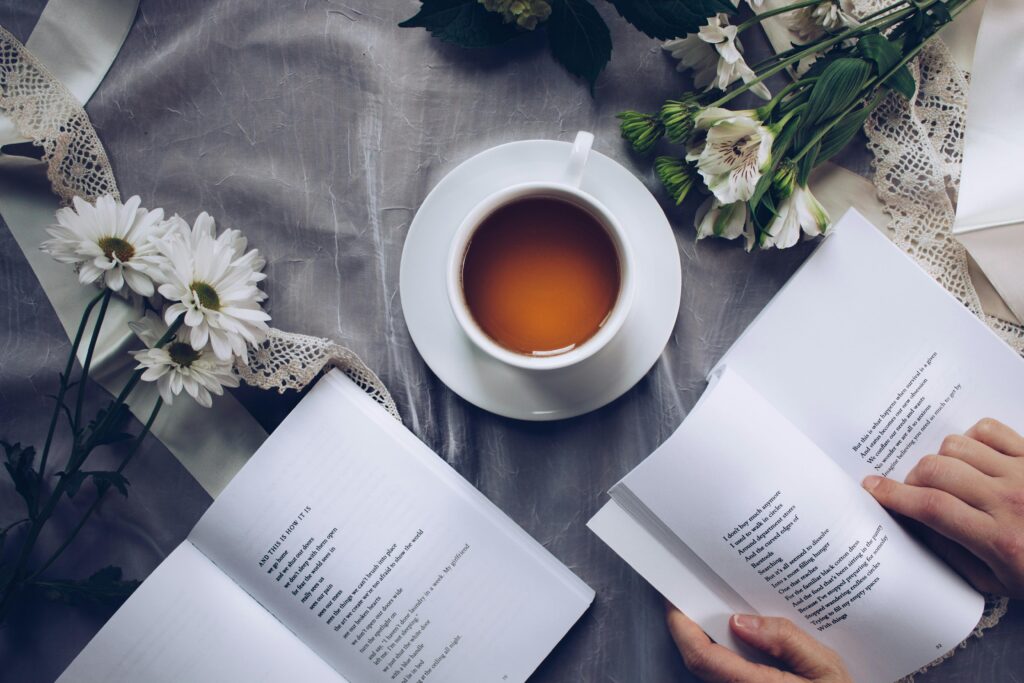Poetry, an art form as ancient as language itself, captivates readers through its unique structures and forms. Understanding the various structures of poems not only enhances appreciation but also aids in crafting one’s own poetic works.
Fundamental Elements of Poetic Structure
At the heart of every poem lies its structure, which encompasses several key components:
Lines and Line Breaks
A line is the basic unit of a poem, and the way lines are broken can significantly affect the poem’s rhythm and meaning. Line breaks can create pauses, emphasize certain words, or contribute to the poem’s visual layout. For instance, enjambment—where a sentence or phrase runs over from one line to the next without a terminal punctuation mark—can create a sense of continuity or urgency.
Stanzas
Lines are often grouped into stanzas, which function similarly to paragraphs in prose. Stanzas can vary in length and pattern, contributing to the poem’s overall form and thematic development.
Rhyme Schemes
The rhyme scheme refers to the pattern of rhymes at the end of each line. Common schemes include ABAB, AABB, and ABCB. Rhyme schemes can enhance the musicality of a poem and help to reinforce its structure.
Meter
Meter is the rhythmic pattern of stressed and unstressed syllables in a line of poetry. Common metrical feet include:
- Iamb: an unstressed syllable followed by a stressed syllable (e.g., “de-LIGHT”).
- Trochee: a stressed syllable followed by an unstressed syllable (e.g., “TA-ble”).
- Dactyl: a stressed syllable followed by two unstressed syllables (e.g., “BEAU-ti-ful”).
- Anapest: two unstressed syllables followed by a stressed syllable (e.g., “in-ter-VENE”).
The arrangement of these feet into lines creates the poem’s meter, which can influence its tone and pace.
Common Poetic Forms and Their Structures
Poems come in various forms, each with its own structural rules and conventions. Here are some of the most notable:
Sonnet
The sonnet is a 14-line poem with a specific rhyme scheme and meter, traditionally iambic pentameter. There are two primary types:
- Petrarchan (Italian) Sonnet: Consists of an octave (eight lines) with an ABBAABBA rhyme scheme, followed by a sestet (six lines) with varying rhyme schemes such as CDECDE or CDCDCD.
- Shakespearean (English) Sonnet: Comprises three quatrains (four-line stanzas) with an ABABCDCDEFEF rhyme scheme, concluding with a rhymed couplet (GG).
Haiku
Originating from Japan, the haiku is a three-line poem with a syllabic pattern of 5-7-5. Haikus often focus on nature and the changing seasons, capturing a moment in time with clarity and simplicity.
Villanelle
The villanelle is a 19-line poem consisting of five tercets (three-line stanzas) followed by a quatrain (four-line stanza). It employs two repeating rhymes and two refrains, following the pattern ABA ABA ABA ABA ABA ABAA. This form is known for its musicality and the emphasis created by the refrains.
Free Verse
Free verse poems do not adhere to a specific rhyme scheme or meter, allowing poets greater flexibility in expression. Despite the lack of formal structure, free verse relies on other poetic devices such as imagery, alliteration, and assonance to create rhythm and meaning.
Exploring Poetic Devices
Beyond structural elements, poets employ various devices to enhance their work:
Alliteration
The repetition of initial consonant sounds in closely positioned words (e.g., “wild and whirling wind”) adds a musical quality to the poem.
Assonance
The repetition of vowel sounds within words (e.g., “the mellow wedding bells”) creates internal rhyming and can affect the mood of the poem.
Enjambment
As mentioned earlier, enjambment occurs when a sentence or phrase extends beyond the end of a line, creating a sense of movement and continuity.
Caesura
A caesura is a deliberate pause or break within a line, often marked by punctuation. It can create a dramatic effect or emphasize a particular word or phrase.
Addressing Common Questions About Poetic Structures
Understanding poetic structures often raises several questions:
- What is the difference between a stanza and a verse? In poetry, a stanza is a grouped set of lines within a poem, often set off by a space. The term verse can refer to a single line of poetry or a stanza, but it is also used more broadly to denote poetry in general.
- Can a poem have multiple structures? Yes, poets often blend different structures or deviate from traditional forms to create unique works. For example, a poem might combine elements of a sonnet and free verse.
- How does structure affect a poem’s meaning? The structure can influence the poem’s rhythm, pace, and emphasis, thereby affecting how the content is perceived and interpreted by the reader.
- Is rhyme necessary in poetry? While rhyme is a common feature in many traditional forms, it is not a requirement. Many modern poems, especially those in free verse, do not use rhyme.
- What is the role of meter in poetry? Meter provides a rhythmic framework that can enhance the musicality of a poem and contribute to its overall mood and tone.
Conclusion
Delving into the structures of poems reveals the intricate craftsmanship behind this literary art form. Whether adhering to traditional forms like sonnets and haikus or exploring the freedom of free verse, understanding these structures enriches both the reading and writing of poetry.
For further exploration of poetic forms and structures, consider visiting the following resources:


